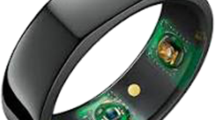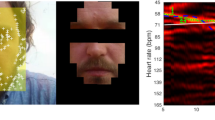Abstract
This paper introduces basic concept of mood fatigue detection and existing solutions as well as some typical solutions, such as mobile sensing and cloud computing technology. In the first place, we sum up main challenges of mood fatigue detection and the direction of future study. Then one type of system implementation is put forward, such system consists of: 1) Wearable devices used to detect the users’ mood fatigue; 2) Clouds data center; 3) Application and service manager. We take overall consideration of many factors like the user’s physiological information, external environment conditions and user behavior, evaluate accurately through big data analytic technology the users’ state of mood fatigue and to what extent shall one keeps vigilant as well as what measures shall be adopted to improve the users’ working performance and alert the users to keep themselves away from the danger. Finally a real system is established in this paper, it is composed of the smart clothing, cloud platform and mobile terminal application.




Similar content being viewed by others
References
Chen M, Hao Y, Li Y, Wu D, Huang D (2015a) Demo: Lives: Learning through interactive video and emotion-aware system. In: Proceedings of the 16th ACM International Symposium on Mobile Ad Hoc Networking and Computing. ACM, pp 399–400
Chen M, Zhang Y, Hu L, Taleb T, Sheng Z (2015b) Cloud-based wireless network: Virtualized, reconfigurable, smart wireless network to enable 5g technologies. Mob Netw Appl 20(6):704–712
Chen M, Zhang Y, Li Y, Hassan M, Alamri A (2015c) AIWAC: affective interaction through wearable computing and cloud technology. IEEE Wirel Commun 22(1):20–27
Chen M, Zhang Y, Li Y, Mao S, Leung V (2015d) EMC: emotion-aware mobile cloud computing in 5g. IEEE Netw 29(2):32– 38
Chen M, Hao Y, Qiu M, Song J, Wu D, Humar I (2016a) Mobility-aware caching and computation offloading in 5g ultradense cellular networks. Sensors 16(7):974–987
Chen M, Ma Y, Hao Y, Wu D, Zhang Y, Song E (2016b) Cp-robot: Cloud-assisted pillow robot for emotion sensing and interaction. In: EAI International Conference on Industrial IoT Technologies and Applications. EAI, pp 111–123
Chen M, Ma Y, Song J, Lai CF, Hu B (2016c) Smart clothing: Connecting human with clouds and big data for sustainable health monitoring. Mob Netw Appl. doi:10.1007/s11036-016-0745-1
Deng X, Wu D, Shen J, He J (2016) Eco-aware online power management and load scheduling for green cloud datacenters. IEEE Syst J 10(1):78–87
Drira H, Ben Amor B, Srivastava A, Daoudi M, Slama R (2013) 3d face recognition under expressions, occlusions, and pose variations. IEEE Trans Pattern Anal Mach Intell 35(9):2270– 2283
Elaiwat S, Bennamoun M, Boussaid F, El-Sallam A (2014) 3-d face recognition using curvelet local features. IEEE Signal Process Lett 21(2):172–175
Hou X, Li Y, Chen M, Wu D, Jin D, Chen s (2016) Vehicular fog computing: A viewpoint of vehicles as the infrastructures
Hu X, Deng JQ, Hu W, Fotopoulos G, Ngai ECH, Sheng Z, Liang M, Li X, Leung V, Fels S (2014) Poster–safedj community: Situation-aware in-car music delivery for safe driving. In: Proceedings of the 20th annual international conference on Mobile computing and networking. ACM, pp 363–366
LeCun Y, Bengio Y, Hinton G (2015) Deep learning. Nature 521(7553):436–444
Li Y, Chen M (2015) Software-defined network function virtualization: A survey. IEEE Access 3:2542–2553
Li Y, Qian M, Jin D, Hui P, Wang Z, Chen S (2014a) Multiple mobile data offloading through disruption tolerant networks. IEEE Trans Mob Comput 13(7):1579–1596
Li Y, Wu T, Hui P, Jin D, Chen S (2014b) Social-aware d2d communications: Qualitative insights and quantitative analysis. IEEE Commun Mag 52(6):150–158
Li Y, Zheng F, Chen M, Jin D (2015) A unified control and optimization framework for dynamical service chaining in software-defined nfv system. IEEE Wirel Commun 22(6):15– 23
Li Y, Jin D, Hui P, Han Z (2016) Optimal base station scheduling for device-to-device communication underlaying cellular networks. IEEE Journal on Selected Areas in Communications 34(1):27–40
Lin K, Wang W, Wang X, Ji W, Wan J (2015) Qoe-driven spectrum assignment for 5g wireless networks using sdr. IEEE Wirel Commun 22(6):48–55
Lin K, Chen M, Deng J, Hassan MM, Fortino G (2016a) Enhanced fingerprinting and trajectory prediction for iot localization in smart buildings. IEEE Transactions on Automation Science and Engineering pp(99):1–13. doi:10.1109/TCSVT.2016.2539618
Lin K, Song J, Luo J, Ji W, Hossain MS, Ghoneim A (2016b) Gvt:green video transmission in the mobile cloud networks. IEEE Transactions on Circuits and Systems for Video Technology pp(99):1–11. doi:10.1109/TCSVT.2016.2539618
Liu D, Sun P, Xiao Y, Yin Y (2010) Drowsiness detection based on eyelid movement. In: 2010 Second International Workshop on Education Technology and Computer Science (ETCS), vol 2. IEEE, pp 49–52
Liu Q, Ma Y, Alhussein M, Zhang Y, Peng L (2016) Green data center with iot sensing and cloud-assisted smart temperature control system. Comput Netw 101:104–112
Masci J, Meier U, Cireşan D, Schmidhuber J (2011) Stacked convolutional auto-encoders for hierarchical feature extraction. In: Artificial Neural Networks and Machine Learning–ICANN 2011. Springer, pp 52–59
Sharma N, Banga V (2010) Development of a drowsiness warning system based on the fuzzy logic. International Journal of Computer Applications (0975-2227) 8(9)
Tabrizi PR, Zoroofi RA (2008) Open/closed eye analysis for drowsiness detection. In: 2008. IPTA 2008. First Workshops on Image Processing Theory, Tools and Applications. IEEE, pp 1– 7
Tie Y, Guan L (2013) A deformable 3-d facial expression model for dynamic human emotional state recognition. IEEE Trans Circ Syst Video Technol 23(1):142–157
Vincent P, Larochelle H, Lajoie I, Bengio Y, Manzagol PA (2010) Stacked denoising autoencoders: Learning useful representations in a deep network with a local denoising criterion. J Mach Learn Res 11:3371–3408
Wan J, Zou C, Ullah S, Lai CF, Zhou M, Wang X (2013) Cloud-enabled wireless body area networks for pervasive healthcare. IEEE Netw 27(5):56–61
Wan J, Zhang D, Sun Y, Lin K, Zou C, Cai H (2014a) Vcmia: A novel architecture for integrating vehicular cyber-physical systems and mobile cloud computing. Mob Netw Appl 19(2):153–160
Wan J, Zhang D, Zhao S, Yang L, Lloret J (2014b) Context-aware vehicular cyber-physical systems with cloud support: Architecture, challenges, and solutions. IEEE Commun Mag 52(8):106–113
Wang H, Xu F, Li Y, Zhang P, Jin D (2015) Understanding mobile traffic patterns of large scale cellular towers in urban environment. In: Proceedings of the 2015 ACM Conference on Internet Measurement Conference. ACM, pp 225–238
Wu D, Xue Z, He J (2014) Icloudaccess: Cost-effective streaming of video games from the cloud with low latency. IEEE Trans Circ Syst Video Technol 24(8):1405–1416
Wu D, Huang J, He J, Chen M, Zhang G (2015) Toward cost-effective mobile video streaming via smart cache with adaptive thresholding. IEEE Trans Broadcast 61(4):639–650
Yang JB, Nguyen MN, San PP, Li XL, Krishnaswamy S Deep convolutional neural networks on multichannel time series for human activity recognition. In: Proceedings of the 24th International Joint Conference on Artificial Intelligence (IJCAI), Buenos Aires, Argentina, pp 25–31
Yao K, Lin W, Fang CY, Wang JM, Chang SL, Chen SW (2010) Real-time vision-based driver drowsiness/fatigue detection system. In: IEEE, pp 1–5
Zhang Y, Chen M, Mao S, Hu L, Leung VC (2014) Cap: Community activity prediction based on big data analysis. IEEE Netw 28(4):52–57
Zhang Y, Qiu M, Tsai CW, Hassan MM, Alamri A (2015) Health-cps: Healthcare cyber-physical system assisted by cloud and big data. IEEE Systems Journal PP(99):1–8. doi:10.1109/JSYST.2015.2460747
Zhang Y, Chen M, Huang D, Wu D, Li Y (2016) Idoctor: Personalized and professionalized medical recommendations based on hybrid matrix factorization. Future Generation Computer Systems pp –, 10.1016/j.future.2015.12.001, http://www.sciencedirect.com/science/article/pii/S0167739X15003842
Van der Zwaag MD, et al D (2012) The influence of music on mood and performance while driving. Ergonomics 55(1):12–22
Acknowledgments
The authors would like to extend their sincere appreciations to the Deanship of Scientific Research at King Saud University, Riyadh, Saudi Arabia for its funding of this research through the Profile Research Group project (PRG-1436-17).
Author information
Authors and Affiliations
Corresponding author
Rights and permissions
About this article
Cite this article
Shi, X., Hao, Y., Zeng, D. et al. Cloud-Assisted Mood Fatigue Detection System. Mobile Netw Appl 21, 744–752 (2016). https://doi.org/10.1007/s11036-016-0757-x
Published:
Issue Date:
DOI: https://doi.org/10.1007/s11036-016-0757-x




